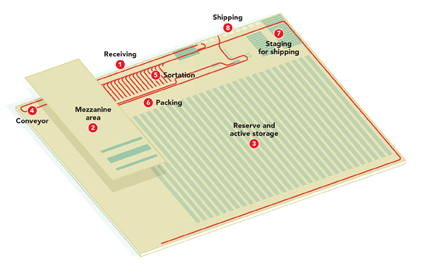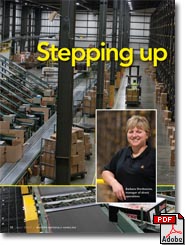Supply Chain Software: How Rocky Brands makes it work
Warehouse management and control systems are the key components to order fulfillment processes at Rocky Brands’ revamped distribution center.
Latest Material Handling News
Registration open for Pack Expo International 2024 Walmart chooses Swisslog AS/RS and software for third milk processing facility NetLogistik partners with Vuzix subsidiary Moviynt to offer mobility solutions for warehouses Lucas Watson appointed CSO for Körber’s Parcel Logistics business in North America Hyster recognizes Dealers of Distinction for 2023 More NewsRocky Brands, Inc.; Logan, Ohio
Size: 210,000 square feet, including a mezzanine area
Products: Footwear and apparel
Stock Keeping Units (SKUs): 43,000
Throughput: From 10,000 to 48,000 units per day
Shifts: 5 days/3 shifts
Employees: 67 full-time employees, plus seasonal fluctuations
By bringing together a warehouse management (WMS) and warehouse control system (WCS), Rocky Brands has seen a significant increase in throughput and productivity. The systems enable the manufacturer and distributor of outdoor footwear and apparel to quickly and efficiently manage conventional replenishment orders to retailers as well as a growing e-commerce channel.
Receiving: Inbound trailers arriving at receiving (1) are floor loaded to maximize the cube of the trailer or container. Once receivers verify the load, the contents are manually unloaded to pallets. Once a pallet is complete, it’s staged under the mezzanine (2) and a license plate bar code label is applied. The product is now ready for putaway into the reserve and active storage area (3).
Putaway: Cases, rather than pallets, are stored in the high bay, narrow aisle reserve and active storage area (3). The lower area of the storage area is designated for active picking. Storage areas above 7 feet are used for reserve storage. Pallets are delivered to a cherry picker servicing the aisle selected for storage. Cartons are scanned then putaway, updating the WMS. In addition to the reserve and active storage area, slow moving items and apparel are stored and picked in the mezzanine area (2). There, cartons are also scanned into a storage location to confirm putaway in the WMS.
Picking: Picking is RF driven. Orders are received in the WMS and grouped into waves based on how they will be shipped. Once the waves are determined, tasks are created and delivered to a work group or area.
Footwear orders are picked in the reserve and active storage area (3). Associates pick to a table, or large rolling cart, on a pallet jack. Each table can hold up to 150 units. Once all of the items for that table have been picked, it is delivered to an induction area for the conveyor (4) and sortation (5) system. They are matched up with any other tables belonging to that wave and then inducted onto the conveyor (4).
At the present, apparel orders are picked to totes in the mezzanine area (2). Like tables, totes are then matched up with any other items for that wave and inducted onto the conveyor (4).
Shipping: Items are scanned and sorted (5) to chutes and transported to a pack station in the packing area (6). There, the packing list and content and shipping labels are printed and applied. The shipping container is then sealed and pushed back onto the conveyor (4) for delivery to shipping (8). Depending on the size of the order, product will be palletized and staged (7) until it is loaded onto a truck. Or, it will be automatically conveyed into a truck (8) for delivery.


Article Topics
Latest in Materials Handling
Registration open for Pack Expo International 2024 Walmart chooses Swisslog AS/RS and software for third milk processing facility NetLogistik partners with Vuzix subsidiary Moviynt to offer mobility solutions for warehouses Materials Handling Robotics: The new world of heterogeneous robotic integration BSLBATT is looking for new distributors and resellers worldwide Lucas Watson appointed CSO for Körber’s Parcel Logistics business in North America Hyster recognizes Dealers of Distinction for 2023 More Materials HandlingAbout the Author
Subscribe to Materials Handling Magazine

Find out what the world's most innovative companies are doing to improve productivity in their plants and distribution centers.
Start your FREE subscription today.
April 2024 Modern Materials Handling

Latest Resources











